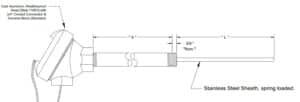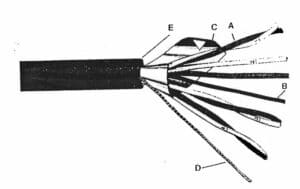Metrology Glossary: Positive Temperature Coefficient (PTC)
What Is A Positive Temperature Coefficient (PTC)?
A Positive Temperature Coefficient (PTC) refers to a characteristic observed in specific materials, such as platinum and nickel, where their electrical resistance increases as the temperature rises. This stands in contrast to most thermistors, which possess a Negative Temperature Coefficient (NTC), meaning that their resistance decreases with rising temperatures. Resistance Temperature Detectors (RTDs) are temperature sensors that utilize the PTC property of metals to measure temperature. When exposed to higher temperatures, an RTD experiences a corresponding increase in its resistance. This change in resistance is then quantified and converted into a temperature reading.
What Is PTC Used For?
Temperature Measurement:
- Resistance Temperature Detectors (RTDs): RTDs harness the positive temperature coefficient (PTC) characteristics of metals such as platinum and nickel for precise and accurate temperature measurements. Used in diverse sectors such as aerospace, power generation, and scientific research, RTDs are favored for their corrosion resistance, wide operational range, and stability.
- PTC thermistors: These semiconductor-based PTC devices exhibit sudden resistance spikes at specific temperatures. Widely applied in consumer products, they serve essential roles in overheat protection and automatic shut-off mechanisms.
Safety and Circuit Protection:
- Self-resetting fuses: Functioning as current limiters, these PTC devices rapidly elevate their resistance when confronted with high current or excessive heat. This automatic interruption of electrical flow safeguards circuits from potential damage. Self-resetting fuses find common usage in battery packs, power tools, and various electronic equipment.
- Motor starting PTCs: These devices play a crucial role in regulating the initial current surge in electric motors, preventing damage and minimizing wear. Gradually lowering their resistance as the motor attains its operational speed, motor starting PTCs facilitate a smooth and controlled operation.
Related Terms
A thermistor is a distinctive semiconductor resistor recognized for its high sensitivity to shifts in temperature....
Loop resistance comprises the combined resistance of both the thermocouple wires and any connectors or terminals within the circuit....
A Resistance Temperature Detector (RTD) is a sensor used for temperature measurement based on the principle of how the electrical resistance of a metal changes with alterations in temperature....







